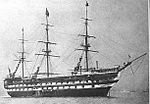Bryn Celli Ddu

Bryn Celli Ddu Welsh pronunciation: [brʌn keːɬi ðɨː] is a prehistoric site on the Welsh island of Anglesey located near Llanddaniel Fab. Its name means 'the mound in the dark grove'. It was archaeologically excavated between 1928 and 1929. Visitors can get inside the mound through a stone passage to the burial chamber, and it is the centrepiece of a major Neolithic Scheduled Monument in the care of Cadw. The presence of a mysterious pillar within the burial chamber, the reproduction of the 'Pattern Stone', carved with sinuous serpentine designs, and the fact that the site was once a henge with a stone circle, and may have been used to plot the date of the summer solstice have all attracted much interest.
Excerpt from the Wikipedia article Bryn Celli Ddu (License: CC BY-SA 3.0, Authors, Images).Bryn Celli Ddu
Plas Llwynonn,
Geographical coordinates (GPS) Address Website External links Nearby Places Show on map
Geographical coordinates (GPS)
| Latitude | Longitude |
|---|---|
| N 53.2077 ° | E -4.2361 ° |
Address
Bryn Celli Ddu
Plas Llwynonn
LL61 6EQ , Llanddaniel Fab
Wales, United Kingdom
Open on Google Maps







